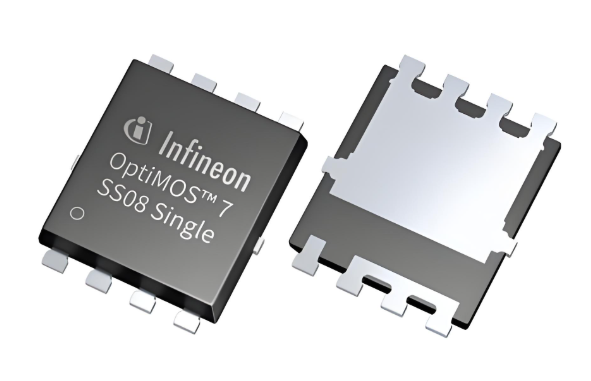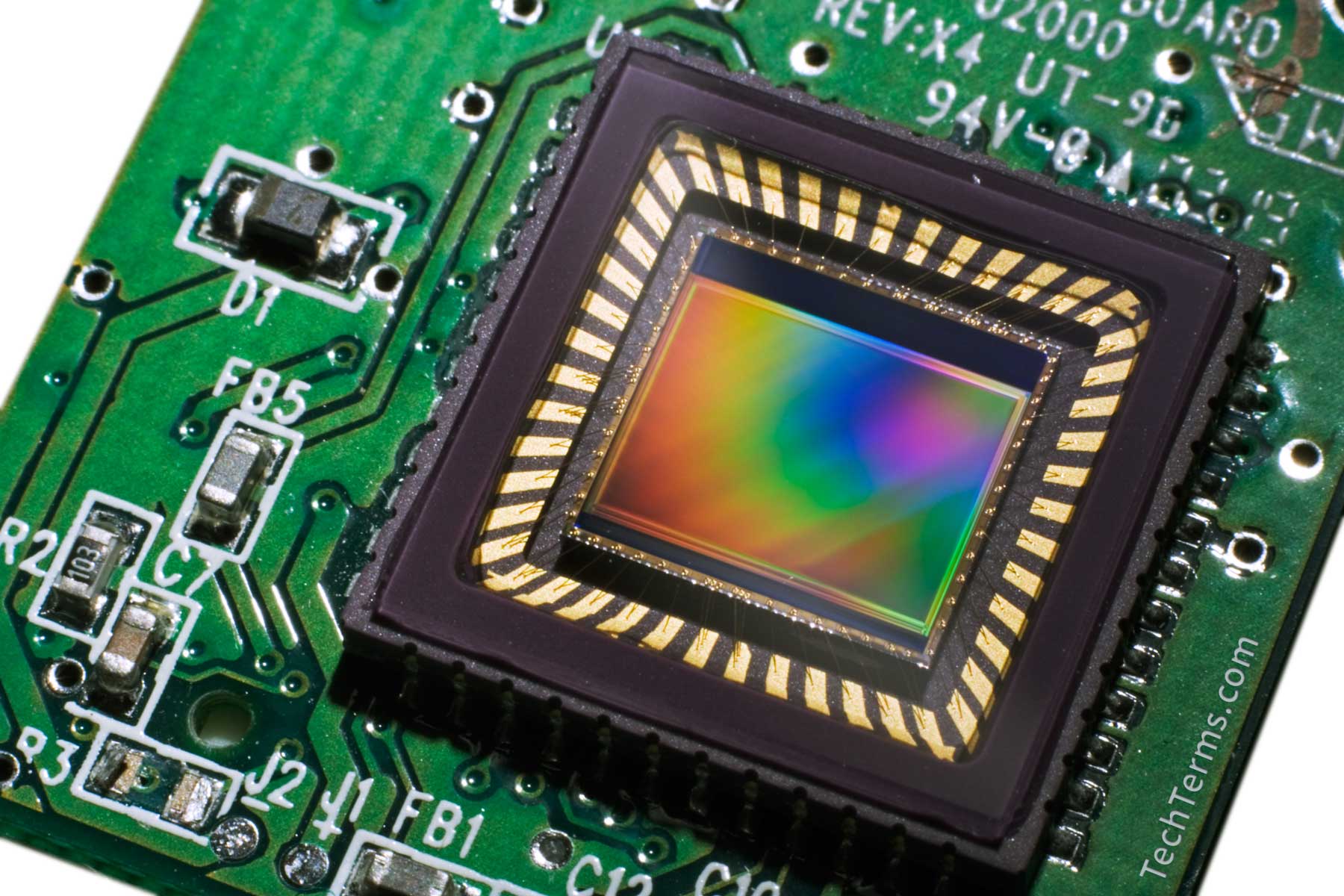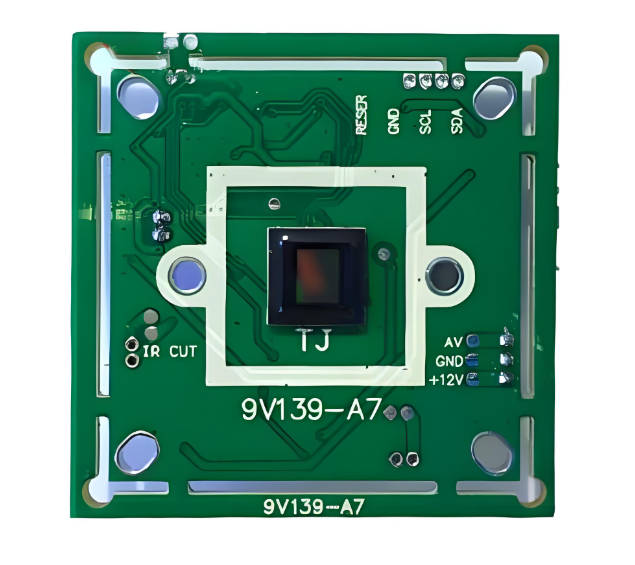No, a MOSFET is an individual transistor that can switch or amplify electrical signals, while CMOS is a technology that combines complementary MOSFETs‚ÄĒboth N-channel and P-channel‚ÄĒto create highly efficient digital circuits. One is a building block, and the other is a design method that uses thousands or even billions of those blocks. To really see the difference, let‚Äôs walk through what each term means and how they connect in today‚Äôs electronics.
What is a MOSFET?
A MOSFET stands for Metal-Oxide-Semiconductor Field-Effect Transistor. It is one of the most widely used electronic components in the world. Think of it as a tiny switch that can turn current on and off in a circuit. Unlike older switches that rely on mechanical movement, MOSFETs work by using an electric field to control the flow of charge. This makes them fast, efficient, and durable.
MOSFETs appear in everything from power regulators to memory chips. They can handle both high power and delicate signal processing, which is why they are everywhere in modern electronics. Because they are scalable and reliable, engineers continue to rely on MOSFETs as the backbone of both analog and digital systems.

Does A MOSFET is Composed of Four Elements?
Every MOSFET has four terminals, and each one has a unique role:
- Source ‚Äď This is where the current carriers, usually electrons or holes, enter the device.
- Drain ‚Äď This is where the carriers leave the device after passing through the channel.
- Gate ‚Äď This is the control terminal. By applying a voltage here, you decide whether the channel between source and drain is open or closed.
- Body (or Substrate) ‚Äď This is the underlying layer of material that holds the structure together. It usually connects to a fixed potential to stabilize the device.

Together, these four parts make the MOSFET function like a controlled valve. Imagine turning a faucet on and off with your hand. The gate in a MOSFET does the same job, but it uses voltage instead of physical effort.
Types of MOSFET
MOSFETs are classified based on their channel type, conduction mode, and power handling. Choosing the right type depends on the application. Here’s a detailed overview:
N-Channel MOSFET
- Uses electrons as majority carriers.
- Requires a positive voltage at the gate relative to the source to turn on.
- Often used for low-side switching, where the source connects to ground.
- Advantages: High electron mobility allows faster switching and higher efficiency.
P-Channel MOSFET
- Uses holes as majority carriers.
- Requires a negative gate voltage relative to the source to turn on.
- Commonly used for high-side switching, where the source connects to the positive supply.
- Slightly slower than N-channel MOSFETs due to lower hole mobility.
Enhancement Mode MOSFET
- Normally off when the gate-source voltage is zero.
- Requires a gate voltage to enhance conductivity.
- Most modern MOSFETs are enhancement mode, especially in digital circuits and power applications.
Depletion Mode MOSFET
- Normally on at zero gate voltage.
- Applying a gate voltage reduces conductivity.
- Less common but useful in some analog circuits.
Power MOSFET
- Designed to handle high currents and voltages.
- Often used in power electronics, such as inverters, motor drives, and LED drivers.
- Features low on-resistance to reduce power loss.
Why MOSFETs are Important in Power Electronics?
We can say, MOSFETs are the backbone of modern power electronics. Their role goes far beyond simple switching‚ÄĒthey determine efficiency, thermal performance, and the reliability of electronic systems. Here‚Äôs why they are indispensable:
- High Switching Speed
MOSFETs can turn on and off in nanoseconds. This rapid switching is crucial for high-frequency applications such as DC-DC converters, switch-mode power supplies, and motor drivers. Faster switching reduces energy loss in the form of heat, enabling compact designs and higher efficiency.
- Low On-Resistance (Rds(on))
Power MOSFETs have extremely low on-resistance, meaning less voltage drop across the device when conducting. Lower resistance translates directly to less heat generation and higher efficiency. For example, in a 12V power supply handling 10A, a MOSFET with an Rds(on) of 10mő© will lose only 1.0W, keeping the system cool and energy-efficient.
- Minimal Gate Drive Power
Unlike bipolar transistors, MOSFETs require almost no current to control the gate. A small voltage is enough to switch large currents on and off. This allows microcontrollers and digital circuits to drive MOSFETs directly without additional amplifiers, simplifying the circuit design.
- High Current and Voltage Handling
Power MOSFETs can manage high currents (tens or hundreds of amps) and high voltages (up to thousands of volts). This capability makes them ideal for industrial inverters, electric vehicle motor controllers, and LED drivers. Designers can achieve higher power density without sacrificing reliability.
What is CMOS?
CMOS stands for Complementary Metal-Oxide-Semiconductor. Instead of being a single component, CMOS refers to a technology for building logic circuits. It combines two types of MOSFETs:
- NMOS (n-type MOSFETs) ‚Äď These conduct when a positive voltage is applied to the gate.
- PMOS (p-type MOSFETs) ‚Äď These conduct when a negative voltage is applied to the gate.
By using both NMOS and PMOS in pairs, CMOS circuits achieve something very valuable: low power consumption. A CMOS gate only draws significant current when it switches states. In steady operation, it hardly wastes any energy. This is why CMOS has become the standard for digital electronics. From smartphones to cloud servers, CMOS technology powers almost every digital device you know.

What is the Difference Between a CMOS and a MOSFET?
The distinction is clear once you see their roles:
- A MOSFET is a transistor, a single device used to switch or amplify signals.
- CMOS is a circuit design method that arranges MOSFETs in complementary pairs to create logic gates and larger systems.
| Feature | MOSFET | CMOS |
| Definition | A single transistor used for switching or amplification | A circuit technology using pairs of MOSFETs (NMOS + PMOS) |
| Level | Device level (individual component) | Circuit/system level (logic gates, processors) |
| Power Consumption | Depends on usage; can consume more when switching | Very low static power; only draws current during switching |
| Usage | Power electronics, amplifiers, signal processing, regulators | Digital logic circuits, CPUs, memory, sensors |
| Scalability | Used alone or in small groups | Scales to billions of transistors in integrated circuits |
| Example | Voltage regulator in a laptop charger | Processor inside a laptop or smartphone |
In simpler words, MOSFETs are the bricks, and CMOS is the architectural style that uses those bricks to build skyscrapers. Without MOSFETs, CMOS would not exist. But a single MOSFET by itself is not CMOS.
Does CMOS Use MOSFETs?
Yes, absolutely. CMOS is built entirely from MOSFETs. Each logic gate‚ÄĒwhether it‚Äôs an inverter, AND, or OR gate‚ÄĒuses a pair of MOSFETs working together. One MOSFET pulls the output high, while the other pulls it low. Because only one of them conducts at a time in steady states, the circuit hardly consumes static power.
This is why CMOS chips run cool compared to older technologies like TTL (Transistor-Transistor Logic). It is also the reason why CMOS scaled so well into modern processors and memory chips. Without the efficiency of MOSFETs, today’s electronic devices would overheat or drain batteries far too quickly.
Do Modern CPUs Use MOSFETs?
Yes, and not just a few of them. Modern CPUs contain billions of MOSFETs, all arranged in CMOS configurations. Each transistor acts as a tiny switch, controlling whether a bit of information is a ‚Äú0‚ÄĚ or a ‚Äú1.‚ÄĚ
As manufacturing processes advanced, engineers learned to shrink MOSFETs to nanometer sizes. Today, CPUs use MOSFETs that are only a few dozen atoms wide. This scaling has allowed CPUs to pack more power into smaller chips while keeping energy use under control.
For example, a high-end processor from a decade ago may have had a few hundred million transistors. Today, advanced CPUs in smartphones and servers have tens of billions of MOSFETs, all functioning in harmony thanks to CMOS technology.

Why Do People Confuse MOSFETs and CMOS?
The confusion comes from the overlap in terminology. Since CMOS circuits are built from MOSFETs, people sometimes use the terms loosely. However, the key difference is scope. A MOSFET is an individual transistor. CMOS refers to an entire circuit style that depends on using many MOSFETs in complementary pairs.
It’s a bit like confusing a single letter with a whole alphabet system. The letter is part of the system, but not the same thing as the system itself.
Conclusion
So, are MOSFETs and CMOS the same? No, they are not. MOSFETs are individual transistors, while CMOS is a circuit design style that relies on MOSFET pairs. One provides the building blocks, and the other organizes them into powerful digital systems.
At EBest Circuit (Best Technology), we understand how critical both MOSFETs and CMOS are in modern circuit design. Our PCB manufacturing services support advanced semiconductor packaging and power management needs. With certifications like ISO9001, ISO13485, IATF16949, and AS9100D, we deliver boards trusted by industries from medical to aerospace. Using MES systems, we guarantee full traceability and rigorous quality control.
If you are designing circuits that involve MOSFETs, CMOS, or advanced digital logic, EBest Circuit (Best Technology) is here to provide the PCB solutions you need with precision, reliability, and competitive pricing.
FAQs
1. Why are MOSFETs important in electronics?
MOSFETs act as fast switches that control current with very little power. This makes them ideal for both power and signal applications.
2. Why is CMOS more efficient than other logic technologies?
Because only one transistor in a CMOS pair conducts at a time, it consumes very little power in a steady state.
3. Can you have CMOS without MOSFETs?
No. CMOS is entirely built from MOSFETs. Without them, CMOS circuits would not exist.
4. How many MOSFETs are in a CPU?
Modern CPUs can contain billions of MOSFETs, each working as a tiny on/off switch to perform logic operations.
5. Are MOSFETs used only in digital circuits?
No. MOSFETs are also widely used in analog circuits, power supplies, amplifiers, and motor controllers.


